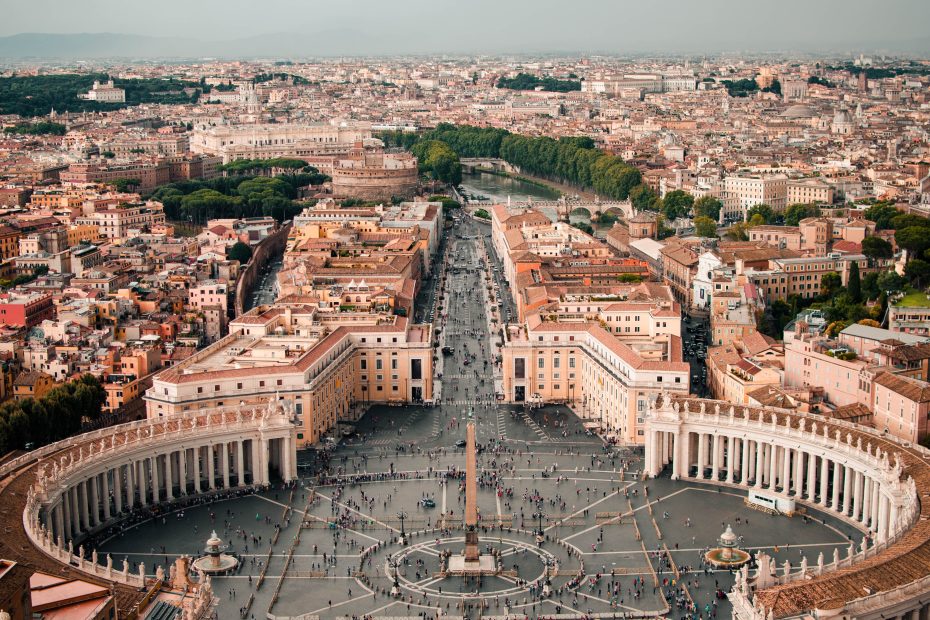Table of Contents
Introduction
Nestled in the heart of Rome lies the world’s smallest independent nation – Vatican City. Though small in size, Vatican City holds enormous significance as the governing center of the Catholic Church and home to some of the most sacred sites in Christendom. From St. Peter’s Basilica to the Sistine Chapel, Vatican City provides an unparalleled look into centuries of Catholic history, art, and culture. Let’s embark on a journey through this remarkable city-state and uncover the many wonders found within its walls.
Geography and Layout
Vatican City is an independent city-state covering just 0.2 square miles entirely surrounded by the city of Rome. Within its compact area are contained many of the most iconic sites and treasures of the Catholic faith. At its center is St. Peter’s Square, dominated by the awe-inspiring St. Peter’s Basilica. Surrounding the basilica is the Vatican Palace complex, home to the Pope and headquarters of the Roman Curia. Connected to St. Peter’s is the magnificent Sistine Chapel, whose ceiling is painted with Michelangelo’s masterpiece frescoes. Outside the walls of Vatican City proper but within its territory are other buildings and institutions like the Vatican Museums, the Vatican Gardens, and Castel Sant’Angelo. Though small, every inch of Vatican City is packed with priceless art, architechture, and history.
History and Political Structure
The origins of the Vatican date back to the early 4th century AD when construction began on Old St. Peter’s Basilica over the believed burial site of St. Peter, considered the first Pope. As the home of the Papacy and Holy See, the Vatican steadily grew in importance over the centuries. Key events included the Avignon Papacy in the 14th century when Popes resided in France, and the rebuilding of St. Peter’s Basilica during the Renaissance. In 1929, Vatican City was established as an independent state by the Lateran Treaty under Pope Pius XI, with the Pope as its sovereign ruler. Today it has its own postal service, media, governing bodies, and Swiss Guard security forces. However, the Holy See retains responsibility for governing the worldwide Catholic Church. The Pope is elected by the College of Cardinals in secret conclave and serves as the spiritual leader of over 1 billion Catholics.
Art and Culture
Art abounds throughout Vatican City, from Michelangelo’s Pietà sculpture in St. Peter’s Basilica to the Raphael Rooms frescoes in the Papal Palace. The Vatican Museums hold some of the world’s greatest masterpieces, including the renowned Sistine Chapel with Michelangelo’s Genesis frescoes and Last Judgment painting. Also found are ancient Roman sculptures like the Laocoön and Apollo Belvedere, plus important collections of Egyptian artifacts. Vatican City celebrates Catholic religious and cultural events like Easter and Christmas mass at St. Peter’s, papal addresses, and the Epiphany. The colorful Swiss Guards who protect the Pope and Vatican City are themselves a cultural emblem, wearing vibrant Renaissance-style uniforms.
Religion and Spirituality
As the seat of the Catholic Church, Vatican City is filled with significant religious sites and active places of worship. Rising above all is St. Peter’s Basilica, the most important Catholic church in the world. Believed to be built over the tomb and relics of St. Peter himself, it is where new Popes are installed and major Papal masses are held. Within St. Peter’s is Michelangelo’s Pietà along with many other artistic and architectural treasures. Another key church is the Sistine Chapel, location of the conclave to elect new Popes and noted for its array of frescoes. Vatican City is also home to important relics like the skulls of St. Peter and St. John Chrysostom displayed in gilded reliquaries inside St. Peter’s. For pilgrims and visitors, Vatican City offers a profoundly moving religious experience.
Tourism
Vatican City draws over 6 million visitors a year, eager to explore its museums, churches, gardens, and architecture. Most start their visit in St. Peter’s Square, designed by Bernini and flanked by colonnades symbolizing the embracing arms of the church. Entering St. Peter’s Basilica is a breathtaking experience, surrounded by artistic masterworks in a setting of grand scale. No visit is complete without seeing the Sistine Chapel and Vatican Museums. Lesser-known gems include the Vatican Necropolis underground complex and Vatican Gardens, perfect for quiet contemplation. Attending Papal events like the weekly general audience provides a chance to see the Pope up close. Visitors should dress appropriately, book advance tickets, and be prepared for security screenings in order to make the most of their time.
Conclusion
This tiny sovereign state packs an astonishing amount into its small area, giving visitors a window into the long legacy of the Catholic faith. While the artistic and architectural wonders alone make Vatican City a joy to explore, its immense spiritual significance and active role in the Catholic Church bring profound meaning to each sight. Whether Catholic or not, Vatican City offers an unrivaled experience of history, culture, and faith. For anyone visiting Rome, this truly holy city-state deserves to be on the itinerary.
FAQs
What is Vatican City?
Vatican City is an independent city-state and home of the Pope, located entirely within Rome. It serves as the headquarters of the Roman Catholic Church.
When was Vatican City created?
Vatican City was established as an independent state in 1929 under the Lateran Treaty signed by Pope Pius XI and the Kingdom of Italy.
Who governs Vatican City?
The Pope serves as the sovereign ruler of Vatican City, with the Roman Curia acting as the central governing body. The Pope delegates executive authority to the President of the Governorate of Vatican City State.
How large is Vatican City?
Vatican City covers just 0.2 square miles, making it the world’s smallest independent nation by both area and population.
What languages are spoken in Vatican City?
The official language is Italian. Latin is also extensively used in official documents and ceremonial events. Swiss Guards speak Swiss German among themselves.
